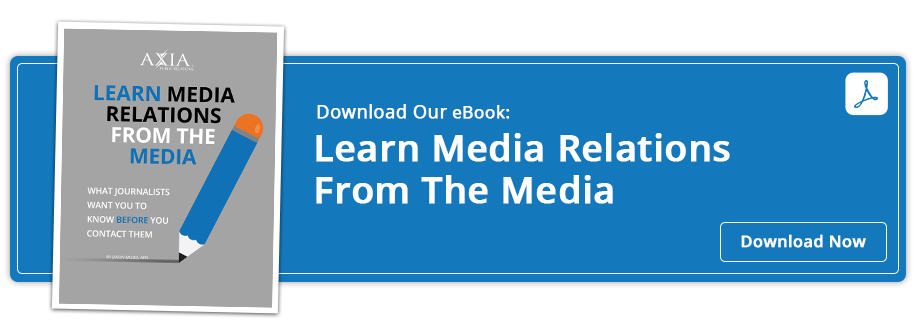 Use PR expertise to learn how to work with media
Use PR expertise to learn how to work with media
Many companies want to know how to control the media. They want to know exactly when a story will appear and what it will say.
The truth is you cannot control when or if a news outlet will run a story. Nonetheless, with help from PR, you can learn to better target your media relations efforts, give journalists what they want and increase your chances for coverage.
How the media process works
The media helps to inform the public about what’s going on in the world and often shapes opinion on current issues and events. Reporters frequently conduct interviews with experts, business leaders and key principles regarding the stories they write. The stories may be assigned by an editor, determined by breaking news, developed from information or pitches they receive or the result of investigative reporting.
Although the reporter is typically the one you speak to, there is a lot that goes on behind the scenes. There are editors, producers and directors who have final say over what gets aired or printed and when. Add to that the inherent deadlines and space limitations, and you realize journalism is a very competitive business. Therefore, even if you have given an extensive interview and made a great connection with the writer, there is no guarantee that your information will be included or that it will run at all.
Breaking news and crises will almost always trump a basic story, which makes news even more unpredictable. If you are given a guaranteed placement, you are most likely being offered an advertorial or sponsored content, which is really an advertisement that you pay for, disguised as a story.
How to improve your odds for media coverage
Understand the reporter and what she wants before the pitch or interview. Many companies make the mistake of pitching to the wrong journalist, someone who is not really interested in covering their news. In addition, it’s okay to ask questions of the reporter before an interview, such as the nature of the story and whom else the reporter has talked to. This will serve to ensure that you are the right person and give you an idea of how your information will enhance the piece.
Make the reporter’s job easier. Have helpful facts ready and provide supporting images or video when appropriate. You might also offer background information on the topic, make yourself available for follow-up or suggest other people the journalist should interview. Even if you are not included in the story, the reporter will remember your usefulness and be more receptive to future pitches and story opportunities.
Have something interesting to say. It’s natural to want the press to cover every great thing you do, but this is not realistic. More importantly, it’s usually not real news. For example, your company may be very excited about your upcoming awards dinner to honor top salespeople, but this is not something that will typically interest the general public. A reporter’s job is to provide news that will attract her target audience. Anything else should be saved for your company newsletter.
Get the right PR firm to help you. Remember that you don’t have to go it alone. PR professionals are experts at handling the media; they have already established the right relationships and will provide your best chances for receiving media coverage.
Let Axia Public Relations be your media relations partner. We will help you develop a comprehensive media strategy that increases your visibility and works alongside your overall strategic goals. Contact us today or download our e-book Learn Media Relations from the Media for more tools and tips to enhance your media coverage and get results.
 Lisa Goldsberry is a writer for Axia Public Relations with more than 15 years of public relations experience. She specializes in business and technology PR. Connect with Axia Public Relations on Twitter at @axiapr.
Lisa Goldsberry is a writer for Axia Public Relations with more than 15 years of public relations experience. She specializes in business and technology PR. Connect with Axia Public Relations on Twitter at @axiapr.
Featured image credit: 123rf.com
Topics: media relations, public relations


Comment on This Article